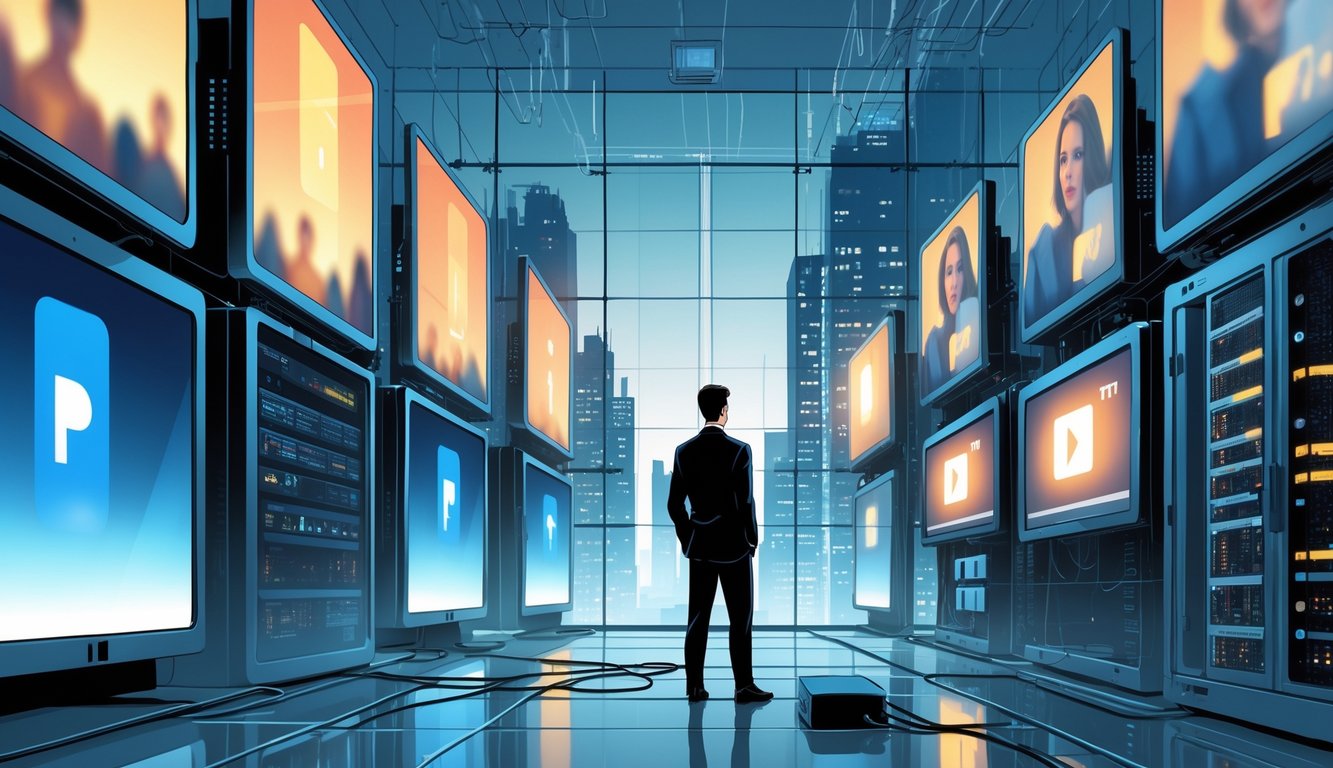
The Psychology of Viewer Engagement
Honestly, the math here is a mess. Every time I check Twitter, the whole conversation is just a feedback loop—cliffhangers, binge sessions, endless hot takes. It’s not just boredom; networks study us like lab rats, poking at our social habits and emotions with every delayed release. I’m arguing about spoilers before I’ve even seen a single episode.
FOMO and Maintaining Buzz
So, FOMO. It’s not just hype—this thing eats people alive. I’ve heard execs mumble about “viewer retention” on earnings calls, but for the rest of us, it’s basically panic-buying streaming services because what if you miss out? Netflix, Disney+, Amazon—they’re all doing this weird dance, hiding viewership numbers like it’s nuclear launch codes. Streaming companies keep viewership hidden, so we’re all just guessing what’ll become the next obsession. Feels like a lottery.
“Drop culture”—that’s the phrase. They dangle one episode, then slow-walk the rest, and suddenly everyone’s building wild theories. Networks drag out season releases to force people into these awkward, weekly rituals. I know folks who literally shift their grocery runs to avoid missing an episode drop. Miss one, and suddenly you’re invisible at work. It’s gross, but it works. FOMO turns every episode into a social landmine.
And let’s not pretend this is accidental. Insiders admit it’s all engineered. I see entire group chats explode in real time, and it’s obvious: networks feed off this. You skip a week, and—poof—you’re out of the loop, social stock plummeting.
Community and Social Media Dynamics
The second three episodes drop but the rest are locked behind a paywall? Chaos. Open Instagram: spoiler memes, charts, nonsense polls, and a million gifs. Nothing really fits together except the shared anticipation. Viewer engagement is shaped by discussion patterns. It’s just noise, but it’s sticky noise.
I’ve done digital marketing (regrettably), and yeah, the pattern holds. Drag a series out, and hashtags keep trending. Inside jokes pile up—good luck if you’re behind. It’s less about remembering the show, more about keeping it alive online for as long as possible.
Reddit AMAs, TikTok trends—they’re everywhere. Sometimes it feels like PR plants half of it. Delayed releases spawn these weird “touchpoints,” and engagement doesn’t just spike, it hovers. But “community” is a lie, right? If you’re not caught up, you’re basically irrelevant by next week.
Examples from Iconic Television Series
I’ve never seen a release schedule that made sense. There’s always some sketchy reason—PR spin, “production delays,” whatever. Networks mess with distribution for reasons that have nothing to do with “artistic vision.” Anyone actually tracking these delays? I doubt it.
friends and The Simpsons
People used to say Friends took forever between seasons because of “cast negotiations.” But let’s be honest—NBC dragged it out for ad revenue. Those late-season episodes ran out of order, all to chase sweeps weeks and whatever corporate nonsense they cooked up. Production? Nah, it was about squeezing every last ad dollar.
The Simpsons? Fox clung to Sunday nights and those “Treehouse of Horror” specials like their lives depended on it. They’d bump episodes for football, debates, or just to juice ratings. One exec told Variety, “Holding episodes builds Q4 anticipation and, yes, advertising premiums.” More on that in this 20 television series that forever changed the medium roundup. No other cartoon got jerked around like that.
breaking bad and The West Wing
Breaking Bad’s mid-season split? Torture. AMC played the cliffhanger game because they watched social media blow up, and then cashed in with licensing and Blu-ray sales. This wasn’t art—it was “let’s copy Mad Men’s DVD bump.”
The West Wing? They’d move premieres to dodge State of the Union or elections, so it looked “topical.” An analyst told The Hollywood Reporter ad rates jumped 12% just for ending in May, not March. I can’t keep track of all the moving pieces. Neither could Leo, honestly.
marvel and star wars shows
Marvel and Star Wars on Disney+—it’s like a skincare routine: drip, drip, then nothing for months. WandaVision drops at midnight, The Mandalorian vanishes for a year. Is it production delays or some “platform strategy language”? I heard post-credit teasers sometimes get scheduled before the scripts are even done.
Deadline said Marvel’s event series releases are timed for merch windows and quarterly earnings. If someone claims it’s for “creative pacing,” ask why the action figures always drop with the cliffhangers. Seriously, set a calendar alert or you’ll miss the finale for a show you forgot existed. Long-form storytelling? More like long-form waiting.



